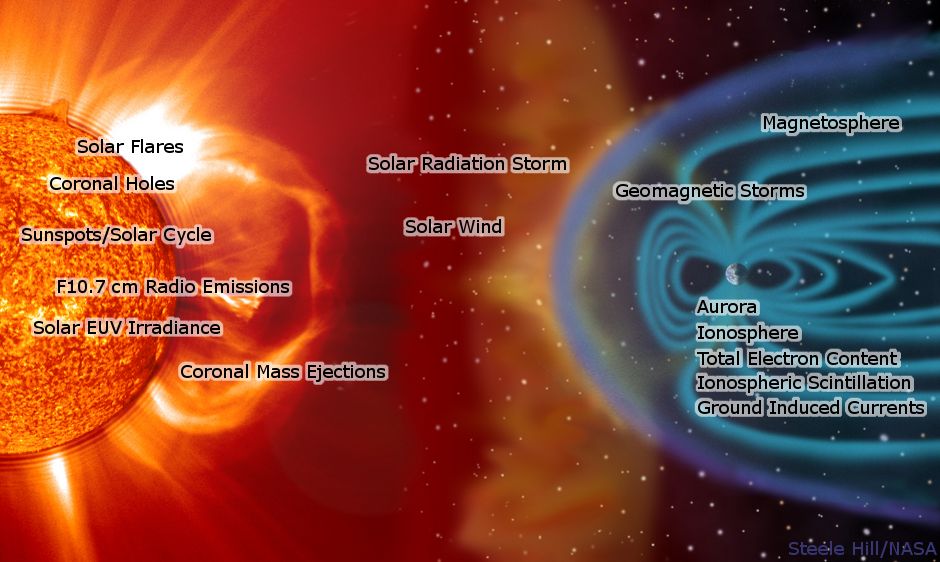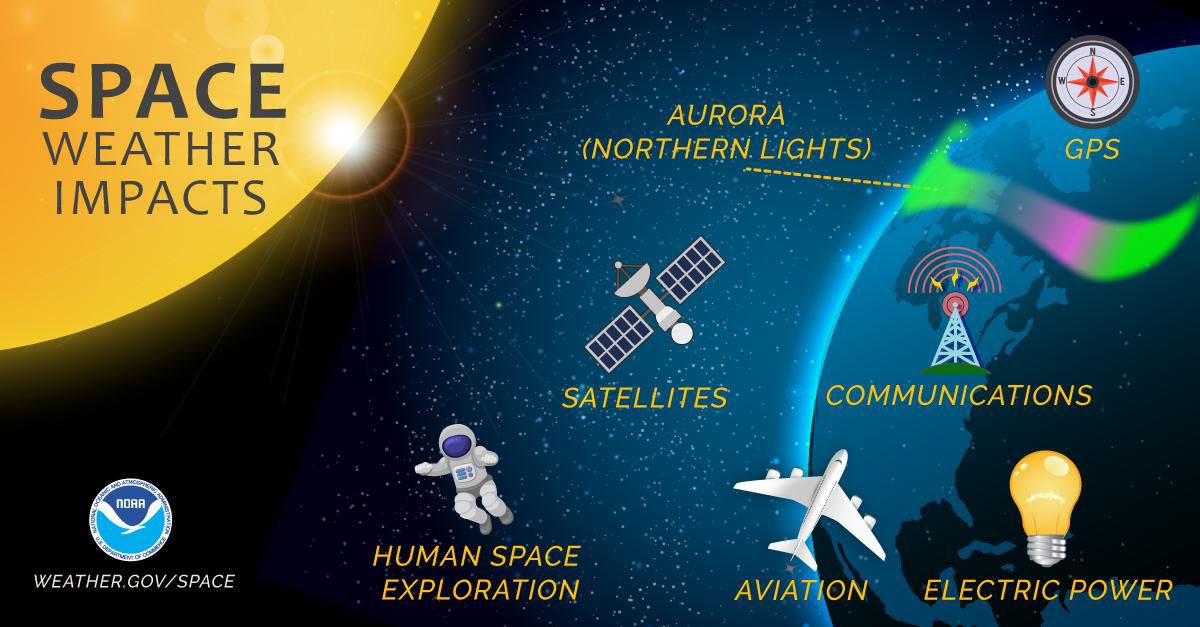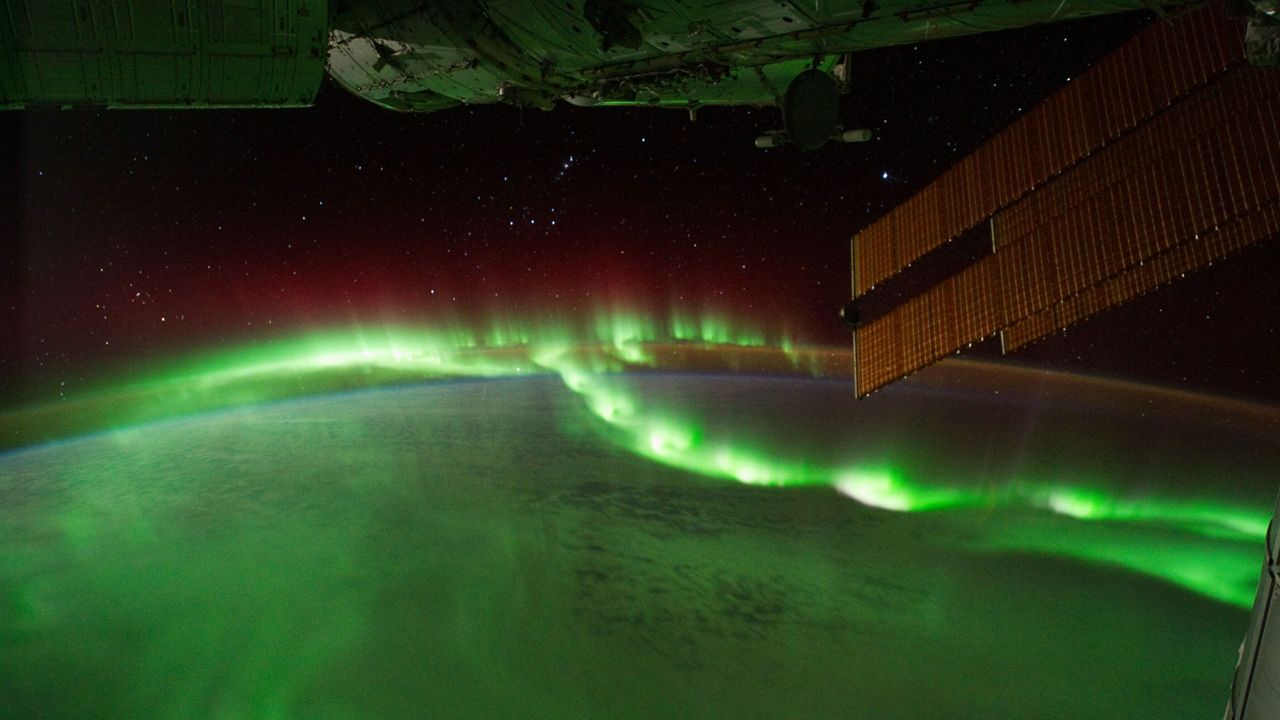The sky is not the limit when it comes to forecasting the weather. There’s a special branch of National Oceanic and Atmospheric Administration (NOAA) scientists that predict weather in outer space.
Meet the Space Weather Prediction Center (SWPC).
There’s a good chance you already witnessed or saw impacts from space weather. A few examples include radio blackouts, the Northern Lights or power outages.
Outer space may seem like a dark and barren place, but monitoring and predicting conditions above Earth’s atmosphere both play a vital role in our day-to-day lives.
Just as areas of high and low pressure govern our atmospheric conditions on earth, solar activity creates what we call space weather.
From stunning auroras to widespread grid outages, particles ejecting from the surface of the sun produce a wide variety of space weather phenomena, some of which can become very impactful.

The sun constantly generates solar wind. This emits radiation, or waves of charged particles (protons and electrons), from the sun into our solar system. Yet, the Earth’s magnetic field and atmosphere are usually enough to shield us from the sun’s harmful rays.
However, an uptick in activity from the sun, usually from a solar flare or coronal mass ejection (CME), will lead to changes in solar wind. The sun sends out a denser wave of charged particles as a result and interacts more with Earth’s magnetic field, causing a geomagnetic storm.
While communications and technological systems dependent on satellite and GPS data can take a hit from this, the intense dose of radiation produced by a geomagnetic storm could also be quite harmful to astronauts and high-altitude pilots exposed to it.

That makes being able to predict the likelihood of such an event is imperative to protect our space and aircrews, as well as our essential instrumentation running outside the boundaries of Earth’s atmosphere.
Just like the Storm Prediction Center (SPC) focuses on severe weather and the National Hurricane Center (NHC) focuses on tropical activity, the Space Weather Prediction Center is a NOAA branch that specializes in space weather. It is based in Boulder, Colorado.
The SWPC meteorologists use near real-time data from satellites and other ground-based instruments. They monitor the current solar conditions, keep a tally of sunspots and scan for solar flares or CMEs.
SWPC meteorologists also use models to help predict space weather out from a few hours to weeks ahead.
Should a solar flare, CME, geomagnetic storm or any other space weather event occur, the SWPC will also issue any necessary watches, warnings or other alerts for the areas most impacted.
With that, the SWPC also uses three separate scales to measure and categorize how impactful a geomagnetic storm, solar radiation storm or a radio blackout could be. Check out the scaling rubrics for each phenomenon here.
Knowledge is key, but timing is just as important should a space weather event occur.
While advancements in technology allow space meteorologists to foresee an event, there must be a plan in place to protect our infrastructures from being impacted. Otherwise, our growing dependence on these technologies could put the world at a halt.
Just recently, the SWPC announced that the Federal Emergency Management Agency (FEMA) released its own space weather training module. FEMA gave an introductory briefing on what space weather is and its impacts, as well as the government's plan of action. For those interested in taking the course, click here.
With an increase in the number of sunspots expected over the next few years, the likelihood of more solar storms will also be on the rise. This can mean more disruptions to our electrical grid, radio transmissions, GPS and the data and feedback provided by satellites.
Our team of meteorologists dives deep into the science of weather and breaks down timely weather data and information. To view more weather and climate stories, check out our weather blogs section.



